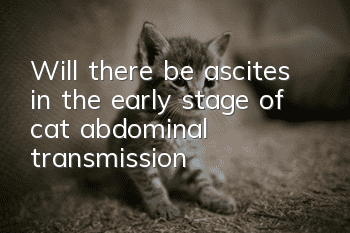Will there be ascites in the early stage of cat abdominal transmission?

Ascites will occur in the early stages of cat-to-abdominal transmission. Feline infectious peritonitis virus can cause peritonitis in cats, leading to an abnormal increase in peritoneal permeability and a decrease in its reabsorption capacity. Lymphatic vessel obstruction causes exudative ascites in cats.
Ascites will occur in the early stages of cat-to-abdominal transmission. Feline infectious peritonitis virus can cause peritonitis in cats, leading to an abnormal increase in peritoneal permeability and a decrease in its reabsorption capacity. Lymphatic vessel obstruction causes exudative ascites in cats. At this time, it can be observed that the cat's abdominal girth is enlarged, the spine and ribs on the back are exposed, and the cat is gradually losing weight.
In the early stages of feline abdominal distension, the ascites is usually colorless, transparent or light yellow. The fluid is viscous because it contains a large amount of fibrin clots, which solidify when exposed to air. The ascites contains a large number of mesothelial cells, neutrophils, and macrophages. As ascites continues to increase, it will compress surrounding organs, so early treatment is recommended.
- What shouldn’t Ragdoll cats eat? What should be fed with caution?
- Do British Shorthair cats get sick?
- Can cats climb trees?
- What should you pay attention to during the birth of kittens?
- Maine Coon cats start losing hair after a few months
- Symptoms and treatments of cat keratitis
- What medicine should Birman cats take for urethritis?
- What is the disease of cat convulsions?
- What do kittens eat?
- Cat vomits hair



